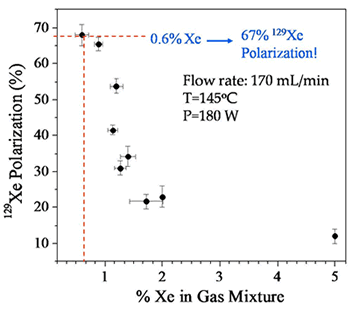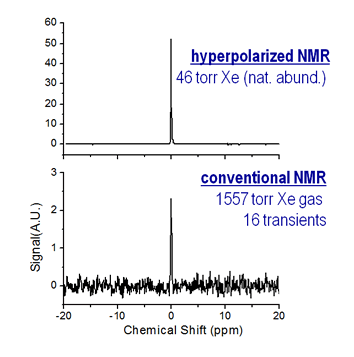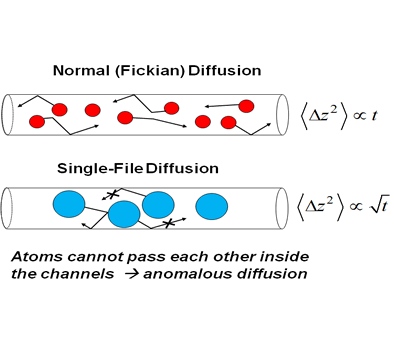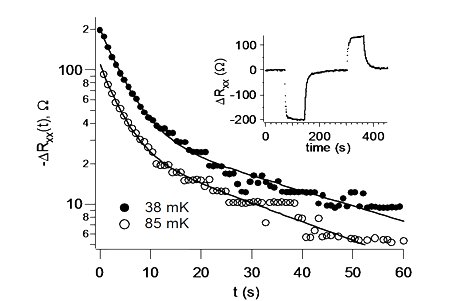Rb-Xe Spin Exchange Optical Pumping. The xenon-129 spin exchange optical pumping (SEOP) hyperpolarization method based on ground-state depopulation optical pumping in an alkali metal-atom vapor (e.g. Rb) to achieve xenon-129 NMR signal enhancements exceeding 4 orders of magnitude. The Bowers lab introduced the use of high power laser diode under high pressure broadening conditions and low Xe density (to reduce spin-destruction) to achieve an unprecedented Xe-129 polarization level of 67%. Applications of Xe-SEOP NMR that have been completed in the Bowers lab include (1) the study of hydrophobic binding pockets in proteins (2) kinetics of formation of Xe-clathrate hydrates (3) porosity of various solids and (4) molecular transport in one-dimensional nano-channels.
Molecular transport in nanotubular materials. Molecular transport properties in nanotubular materials are anomalous when the cross-sectional dimensions are comparable to those of the sorbate, where due to steric interactions, diffusive dynamics may become collective. Validation of theoretical models for single-file or center-of-mass diffusion in such systems has been impaired by the lack of reliable experimental data in sufficiently ideal systems. The NMR chemical shift and spectral lineshape of xenon-129 is extremely sensitive to surface interactions and thus provides a unique probe of the structural and chemical characteristics of the pore spaces in microporous solids. The first unequivocal demonstration of molecular single-file diffusion was completed by Bowers and Vasenkov. Hyperpolarized 129Xe NMR and pulsed field gradient NMR techniques were used to characterize diffusion in a various nanotubular materials. Also of interest is the case of two or more sorbate components, where one component may change the diffusion time-scaling of the smaller sorbate.
Resistively Detected NMR in the Quantum Hall Effect






